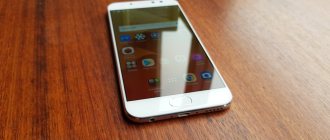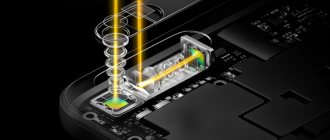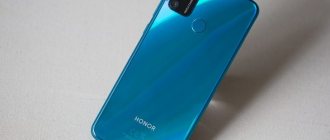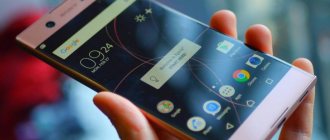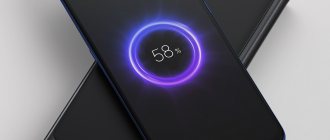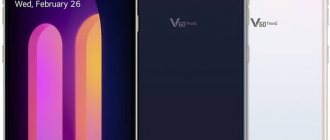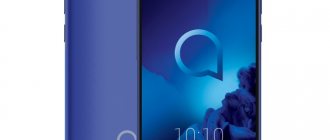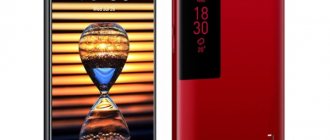The history of smartphones shows how human life is changing. In the 80s, people wanted to carry a communication device in their pocket, but nothing more. In those days, only children played, and cell phones were not available to them. The organizer was a paper notebook, and later a separate electronic device like a calculator. A cassette player allowed me to listen to music on the street. Well, there was no talk about videos - they were viewed only indoors, a VCR was used for this. In short, it is completely incomprehensible why Nokia wanted to combine the functions of a telephone and a personal computer. But, as it turned out, this decision was correct.
Era of the CCP
But in fact, it all did not start with the Finnish giant. Of course, its engineers had first-hand knowledge of PCs - the company produced them with all its might, as you can see by reading the history of Nokia. But the first to significantly reduce the size of the computer was a larger player in this market - IBM. At the beginning of the 90s, the so-called PDAs already existed - pocket personal computers. IBM decided to try to add communication functions to this device.
It must be said that cell phones in those years remained like bricks. Therefore, the product of the computer giant turned out to be very bulky. It was called IBM Simon , presented in 1992 at the COMDEX exhibition. But then it was only a concept - the creators were unable to achieve stable operation from their creation. According to their idea, the device combined a mobile phone, a PDA, a pager and even a fax. A monochrome touch screen was used to control all this functionality. By the way, this allowed IBM Simon to become the first touchscreen phone in the world. Sales of the device started only in 1994, and only in the USA - in 15 states to be precise. The cost was $899.
What could IBM Simon do? It had built-in phone and address books, a calculator, notepad, calendar, world clock, email and several games. A smart keyboard was used to enter text. You could press the screen with your finger or a stylus, which had to be purchased separately. It also supported a PCMCIA memory card. Although there was not much point in it, because the device could not play MP3 music or display pictures. And most importantly: it did not have an operating system that allowed you to install additional applications. That is why the IBM Simon still should not be considered a full-fledged smartphone. It only served as inspiration for other companies.
Another interesting experiment was carried out in 1996. It was carried out by Hewlett-Packard and Nokia. The fruit of their joint labors was a PDA called 700LX . You can consider this device a redesigned version of the HP 200LX, a folding pocket computer equipped with a QWERTY keyboard and a monochrome display. The only noticeable difference was the appearance of a special place for installing a Nokia 2110 . This is how the Americans “elegantly” solved the problem of lack of voice communication. Of course, such a product cannot be called a smartphone, since it consisted of two completely independent devices.
Photo: mycalcdb.free.fr
Photo: mycalcdb.free.fr
Photo: mycalcdb.free.fr
Photo: vchehle.ua
Gradually, the size of cellular communication modules decreased. Mobile phones no longer look like murder weapons. It's time to try to truly combine the capabilities of a PDA and a cell phone in one device. Nokia 9000 Communicator was born , it happened in August 1996. The device had a folding body, an external antenna and a convenient QWERTY keyboard. The information was displayed on a fairly large monochrome display. The device was powered by the GEOS operating system. The dimensions of the communicator were 173 x 65 x 38 mm. The weight was an impressive 397 grams. Interestingly, the device could be used even when closed - for this purpose, there was a numeric keypad and a small screen on the top panel. Nokia will use this form factor more than once in the future. The last time we will see the same number of displays and buttons is in the Nokia E90.
Photo: prodnote.wordpress.com
The disadvantage of the unusual device was its closed operating system. Finnish developers did not have time to introduce the ability to install additional applications here. But even without this, the device was not inferior to full-fledged PDAs that existed at that time. And in addition to this, it allowed you to make calls. That is why we can consider that this is the very first smartphone in the world, albeit with some reservations.
Interesting fact: in the future, for quite a long time, any PDA supplemented with a GSM module will be called a communicator. By analogy with MFPs, which for a very long time were called “copiers,” although this word is a trademark owned by the company of the same name.
The first smartphone – what is it?
There is a belief among smartphone owners that the first smart phone in the history of mobile communications is the iPhone of the first model. In fact, there were three such gadgets - each of them had one part of the capabilities of modern smartphones. Here they are, the first ones - IBM Simon, Ericsson R380 and, after all, iPhone 1.
Smartphone family
First, let’s find out what a “smartphone” is. In the early 2000s, the market for mobile gadgets was dominated by two types of devices - cell phones (mobile phones) and pocket personal computers, also called PDAs or handhelds. Cellular devices were intended for telephone communication; their computing functionality was limited to a calendar and calculator. The quality of a cell phone of a particular model and brand was determined by the power of its cellular communication module, i.e. the ability to maintain stable communications in the city or in rural areas.
In turn, PDAs were a portable electronic organizer with a wide range of functions - reading books, working with maps, playing music and videos, taking notes, including manually using a stylus, surfing the Internet and much more. At first glance, the capabilities of PDAs were no different from smartphones from the world's leading manufacturers of our time, but they had one significant drawback - these gadgets did not have a cellular communication module, i.e. There was no way to use them as a mobile phone.
IBM Smartphone
Attempts to combine the functionality of cell phones and PDAs have been made since the late 80s. The first relatively successful model was the IBM Simon PDA communicator, created by the American company BellSouth Cellular on behalf of the Mitsubishi Electric Corporation. The prototype of the communicator, called Angler by the developers (translated into Russian as fisherman), was presented by its creator Frank Canova on November 23, 1992 in Las Vegas, at the COMDEX technology exhibition. At that time, the Rybolov gadget was revolutionary - it was capable of receiving and making phone calls, sending and receiving fax and paging messages, and working with email.
The final product, called the IBM Simon, had the traditional “brick” shape of cell phones of the time, with data entered using a stylus or pressing buttons on a touch-sensitive QWERTY keyboard. The weight of the handset is 510 grams, the capacity of a fully charged battery was enough for an hour of continuous talk or 12 hours in “stand by” mode. The first smartphone was sold only in the United States between 1994 and 1995; the price of one gadget with a docking station, two batteries and a leather case was $1,099 without a contract with cellular companies or $899 with a two-year contract. Six months after the start of sales, the price of the model with a contract was reduced to $599, which, however, did not particularly affect sales volumes - about 50,000 communicators were sold during the year.
Ericsson smartphone
The Swedish company Ericsson, by the way, one of the oldest manufacturers of telegraph and telephone communication stations in Europe, first used the term “smart phone” in relation to its development – the PDA communicator Ericsson R380, which entered the market in 2000. The gadget was lightweight and small in size - 169 grams, length 130 mm, width 50 mm and thickness 26 mm. Most of the black and white touchscreen was covered with a flip cover. The buttons located on it allowed you to dial a number or answer a call, or use the phone book without using the touch screen. The Ericsson R380 smartphone was for the first time equipped with the Symbian operating system, although it was a closed version that did not allow the installation of third-party applications. The price of the first owner of the name “smartphone” in 2000 was $700.
The iPhone of the first model was also Apple's first known product in the field of mobile communications - at the end of 2004, Steven Jobs directed all the company's efforts to create a smartphone with a multi-touch touch screen under the working title Purple. He was confident in the success of the project, although nothing foreshadowed this. In early 2005, Jobs reached an agreement with one of the leading American cellular operators, Cingular, convincing its owners that Apple would create the first smartphone with a multi-touch screen. The project took two and a half years and $150,000,000 to implement, and the development was carried out in the strictest secrecy. Employees of two neighboring departments creating the hardware and software of the “apple-purple” gadget did not know the final purpose of their work.
Apple smartphone
On January 9, 2007, Jobs unveiled the first iPhone model at the Macworld Conference & Expo in San Francisco. He called the gadget the first device to combine a wide screen with full touch controls, the best Internet communicator and the perfect mobile phone. It should be noted that the first iPhone model was not at all “ideal”, as Jobs declared it - for example, it did not have Bluetooth and MMS messaging functions, the software was closed, and 3G was not supported. The first iPhone gained wild popularity only thanks to its capacitive screen, controlled by two fingers simultaneously (multi-touch) and aggressive advertising in the media, which cost Apple a figure with seven zeros behind it. Models with 4 gigabytes of internal memory cost $499, eight gigabytes – $599.
Smartphones evolve with every new year - if at the end of 2000 they had no equal in the mobile gadget market, today tablets represent serious competition to them. We'll see what developments await us in the near future. However, the largest smartphone manufacturers today prefer to spend their time in courtrooms, engaged in internecine patent wars...
Smartphone development
Subsequently, Nokia released several sequels to its communicator. The 9000i , 9110 and 9110i were not very different from the original The Finns have added the ability to access the Internet and some other functionality. But it remained clear that it was necessary to create a full-fledged operating system that would support the installation of applications from third-party developers. But even the large company Nokia was unable to do this. But a solution to the problem was nevertheless found - in 1998, the Symbian , which will develop an operating system of the same name. In addition to Nokia itself, the consortium included Ericsson, Motorola and Psion. In the future, some other companies joined this community.
Before the first fruits of the consortium's labor, Nokia communicators had no competitors. Of course, interesting products were released in some markets, but for one reason or another they were not in great demand. For example, in 1999, Qualcomm pdQ 800 and pdQ 1900 , operating using Palm OS, were sold in the United States. But buyers were put off by the heavy weight and high cost. Therefore, the American company soon concentrated strictly on mobile processors.
In 2000, the Swedish company Ericsson decided to make its answer to Nokia communicators. She released a device with a large monochrome touch screen and a flip-up lid on which there was a numeric keypad. The model was named Ericsson Smartphone R380 . As you guessed, it was this device that introduced the concept of “smartphone”. They used Symbian OS 5.1 as the operating system. It was still impossible to install third-party applications here. It is possible that this is why Nokia began to use a later version of this operating system in its smartphones.
Ericsson R380 is no good by modern standards. The device had only 4 MB of permanent memory, of which only 1.2 MB was available to the user. The amount of RAM did not exceed 2 MB. Well, its 3.5-inch screen had a resolution of 120 x 360 pixels. The image was displayed on it in four shades of gray. The device was all right only with its weight, which was only 164 grams. A smartphone was sold for $700.
Smartphone
Telephones entered human life relatively recently, and the concept of a “smartphone” is even younger. However, almost every modern person has a personal computer in his pocket. Today, the word “smartphone” can be called a synonym for the word “telephone,” and few people think about the difference between these concepts. Flagships occupy a huge place in the lives of the younger generation. This article will provide detailed information about smartphones and the history of their appearance.
Evolution from the first touch phone to the smartphone.
Smartphone concept
The modern Russian language is replete with foreign words, and “smartphone” is no exception. It is formed by combining two English words.
Smartphone = “smart”, which translates as “smart”, and “phone” - telephone. Thus, a hint of the difference between a phone and a smartphone is immediately visible. More detailed information about the differences between a phone and a smartphone will be discussed later.
Also synonymous with the word “smartphone” is “communicator”. This is a small computer with the functions of a mobile phone. The meaning of “communicator” is the same as “smartphone”, only the word is less popular.
Telephones appeared before smartphones, and yet today they are almost the same concepts. Why has the boundary between these concepts become blurred over time? The fact is that a smartphone is a pocket personal computer. And the very concept of a smartphone did not carry any distinctive features; it was invented only to stand out. So it turned out that previously a pocket computer with telephone functions was a “communicator”, and a telephone with PDA functions was a “smartphone”. Over time, the demand for smartphones grew so much that it became pointless to produce PDAs with phone functions - people simply stopped buying them. Communicators have disappeared, and the boundary between the concepts of “telephone”, “smartphone” and “communicator” has disappeared.
Communicator Nokia 9110i.
At the beginning of the 2000s, there was another interesting option for dividing into classes. Based on what operating system the device was running on, it was determined whether it was a smartphone or a communicator. So, for example, according to the generally accepted opinion, communicators worked on Microsoft Windows Mobile, while all smartphones had Symbian OS in their “stuffing”.
An important aspect was the touch screen and the presence of a keyboard. At the dawn of the smartphone era, devices with a touch screen were classified as communicators, and devices with a QWERTY and/or numeric keypad were classified as smart phones.
Microsoft Windows Mobile in a mid-2000s gadget.
One way or another, gadgets have undergone changes over time. The sizes of communicators became smaller and smaller, and for phones that previously did not have the functionality of a PC, technical characteristics came to the fore. Today, all three of these concepts have merged into one, and in the primary market it is almost impossible to find a device that is not called a smartphone. Next, we will look at the history of the emergence of the term “smartphone” and what the first smart phones were.
History of appearance and background
The word “smartphone” was first coined and coined by the Swedish manufacturer Ericsson. This happened in the year 2000, when the company was in fierce competition with the Finnish equipment manufacturer Nokia. The new Ericsson P380s marked the beginning of the smartphone era. It is noteworthy that the manufacturer does not pursue the goal of introducing any fundamental changes with the new name. Of course, the new model had functional improvements unlike the previous ones, but it couldn’t even be called a full-fledged smartphone. Due to the closed Symbian 5.1 operating system, closed applications could not be installed on the phone).
Nokia 9210.
The Ericsson P380s is not a device that users today would call a smartphone. However, Ericsson did the main thing - they began to create something new. Following the Ericsson P380s, Nokia released its new flagship in 2001, which it also calls a smartphone. The Nokia 9210 had impressive technical specifications and a color touch screen, but even this was not enough to fully have the right to be called a smartphone. The fact is that the device worked on the still closed Symbian 6.0 operating system, which did not support the installation of third-party applications.
The first “real” smartphone was the Nokia 7650. It ran on the updated Symbian 6.1, open to installing applications from third-party developers. The small amount of memory (4MB) and the absence of many functions in Nokia were explained by the fact that their new device is primarily an image model, and only secondarily an intelligent one. Nevertheless, Nokia7650 became the first real smartphone and managed to attract the attention of not only users, but also developers.
Over time, more and more manufacturers joined the “technical race”. Each new device was better than the previous one, but the undisputed leader was never determined. This continued until 2007, when the American company Apple released its first iPhone model on its own iOS operating system. Apple immediately attracted everyone's attention. Immediately establishing herself as a trendsetter, she remains so to this day. Despite the huge number of competitors, Apple has held a leading position in the ranking of the world's largest technology manufacturers for more than ten years.
The first Android smartphone versus the first iPhone (right).
First representatives
Modern people have their own established idea of a smartphone: a compact gadget with a touch screen that has many different useful functions, always with Internet access. However, the first representatives with which the era of smartphones began had much more modest functionality. For example, IBM Simon is considered the ancestor of the modern smartphone. Long before its appearance, engineers had already come up with the idea of creating a hybrid of a telephone and a Personal Computer. However, only in 1993 was a device assembled that at least somewhat met these conditions. This was IBM Simon. It had a 4.7-inch monochrome touch screen, the resolution of which was 160x293 and weighed about five hundred grams. “Simon” was not called a smart phone, but it is considered the first attempt by man to create something like that. The IBM Simon had many advanced features: it could play video games and download images onto it.
Ericsson W950.
Since the 90s, manufacturers have gradually approached the creation of smartphones. Including the year 2000, the term “smartphone” was coined. In just a few years, smart gadgets have ceased to be a luxury item. However, even then the functionality of the devices was extremely poor by modern standards. For example, in 2006, Ericsson released its new flagship. The Ericsson W950 model was notable for the fact that the user interacted with the touch screen using a special stylus. The manufacturer itself positioned this device as a device with an emphasis on musical capabilities. In general, 2006 can be called the year when smartphones began to flourish.
Speaking about the first representatives of smartphones, one cannot fail to mention the first IPhone - the IPhone 2G model, the presentation of which took place in 2007. At this time, the presence of 3G, Wi-Fi, GPS was something taken for granted. Despite the fact that the IPhone 2G was inferior to its competitors in many respects in terms of technical characteristics, it had an excellent design. It is thanks to its minimalist and laconic appearance that the model has gained popularity. Apple relied on design and ergonomics, and, as can be judged by the company’s position in the modern smartphone market, the bet paid off.
Android and iOS
The struggle between the two most popular operating systems has been going on for several years now. First things first.
An operating system is a set of standard programs and functions that ensure the operation of a gadget. Today, the two most popular operating systems are Android and iOS.
The vast majority of gadgets run on Android (with the exception of devices from Apple and Windows Phone). Android positions itself as a universal and quite user-friendly system. It is developed by Google. The advantage of Android is that it is adapted for almost any device. Today, some manufacturers are actively working on developing their own operating systems, but quality and quantity are on Android's side.
Android vs iOS.
As for iOS, it is a unique system, which is a product developed by the American technology manufacturer Apple. Absolutely all Apple products run on iOS. The debate over iOS and Android continues, and the leader has not yet been found. What are the differences between these two operating systems?
Decor. IOS fundamentally uses the same minimalist design, which cannot be personalized or changed. The user is given minimal freedom - for example, independently selecting a screensaver, and that’s all. Android is much more free with this.
Applications. The Apple AppStore and Android Play Market are replete with a huge number of applications, but iOS is stricter about “pirated” versions. For this reason, there are much fewer free applications in the Apple OS. But at the same time, the risk of downloading a program with a virus is minimized.
Updates. Android presents system updates much more often, which is why they may be “raw,” that is, unfinished. For this reason, after updating, Android users sometimes experience freezes or unstable operation of a working gadget.
Synchronization. Apple products are much more closed than Androids. Android products are perceived by computers as ordinary removable media. You can easily connect your device to your PC and move images, music, videos, etc. to the desired folder. With apples, everything is somewhat more complicated: to transfer files you will have to first acquire iTunes, which is only available for Apple computers.
Characteristics of modern smartphones
As mentioned above, today people have a very well-established idea of a smartphone. This is a gadget with a touch screen and Internet access, which has a number of functions. These include:
- Photo and video in good quality, voice recorder;
- Playing audio recordings and videos;
- Ability to work with electronic documents, read electronic books;
- Email;
- The ability to remember all the necessary information, or store it in storage. These are contacts, records, notes, memos, databases;
- Navigator, electronic maps;
- Programming, typing;
- Support for all kinds of games and applications;
- Exchange of SMS and calls;
- Remote control of other devices: TV, speakers or projector;
- Installing third party applications.
Xiaomi Mi9 or Samsung Galaxy S10.
Choosing a smartphone is not an easy task . First of all, you need to determine for what purpose the device will be used. Its functionality depends on this. The request “All at once” will not work: such smartphones simply do not exist. Each model focuses on a few specific functions. When choosing a smartphone, a person relies on several main factors:
- Manufacturer. Brand fame is a guarantee of quality;
- Number of SIM cards. Today you won’t surprise anyone with a set of two cards: one for calls, the other for the Internet;
- Smartphone performance and internal memory capacity. The speed of work depends on this;
- Screen size;
- Camera functions;
- Battery capacity.
However, despite the active development of technology, many modern smartphones still have a large number of shortcomings. Manufacturers are working on eliminating some, but others will have to be dealt with:
- Dimensions. Today, widescreen smartphones are relevant - the larger the screen, the better. But using a large gadget with one hand is not convenient;
- Battery. Gone are the days when your phone needed to be charged once a week. Now, with active use, the device requires recharging at least once a day, or even more often;
- Fragility. One fall can cost you a broken screen;
- Sensitivity to environmental factors. Apples turn off in the cold, and Androids do not tolerate extreme heat.
But despite all this, smartphones have become a big part of human life, and, most likely, they will never leave it. Unless they come up with a more functional and technologically advanced replacement. And in conclusion, a few words about iconic modern devices.
Xiaomi Mi9.
Fans dubbed this model “top-end hardware.” The device has a large screen (2340×1080 with an aspect ratio of 19.5:9), and a diagonal of 6.39 inches. It weighs 173 grams. Performance is top notch – the eight-core Qualcomm Snapdragon 855 processor ensures this model is one of the best gaming smartphones. Battery capacity 3300 mAh. Review of the gadget.
OnePlus 7 Pro.
Loved by users for its good balance between price, technical specifications and design, OnePlus 7 Pro has a large frameless AMOLED panel with a diagonal of 6.67 inches. Screen resolution 3120x1440 pixels. The flagship runs on a Qualcomm processor, complemented by an Adreno 640 video accelerator. The battery capacity is 4000 mAh. Review of the gadget.
Samsung Galaxy S10.
The flagship has a 6.1-inch frameless screen with 1440 x 3040 pixels. He is recognized as having one of the best phone cameras. The standard configuration includes 6.8 GB of RAM. Users are attracted by the ability to shoot 4K video and support for reverse wireless charging. Review of the older model - Note 10.
iPhone XS.
The flagship whose presentation absolutely everyone was waiting for - the iPhone XS has excellent technical characteristics and a serious price. It weighs 174 grams and has a widescreen frameless display. Some of the interesting things in the filling: the ability to recognize faces, capacitive multi-touch. Depending on the configuration, the price ranges from 70,000 to 85,000 rubles.
Development prospects, flexible smartphones
Flexible phone screen.
After the recent presentation of the acclaimed flexible smartphone Samsung Galaxy Fold, we can confidently say that flexible smartphones have every chance of displacing their inflexible predecessors. People are attracted by the functionality of such devices, but they are not yet fully developed. An illustrative example was the same Galaxy Fold, which had problems with the screen. However, it cannot be denied that years, and maybe decades, will pass, and flexible smartphones will be as much a necessity as ordinary smart phones are today.
Symbian era
It cannot be said that the Ericsson product is the first touchscreen smartphone. Similar devices existed before him. However, it quickly became clear to everyone that touch screens are still far from ideal, and therefore they decided to abandon them for some time. The sixth, seventh and eighth versions of Symbian supported them only in theory, but in practice only devices from Sony Ericsson took advantage of this feature (the mobile divisions of the Japanese and Swedish companies merged at that time). The heyday of the Symbian operating system occurred in the first half of the 2000s. the Nokia 9210 communicator was born . The sixth version of Symbian was used here. Nokia 7650 smartphone was presented . Outwardly, it was quite simple, but it had the Symbian OS 6.1 operating system on board. It finally allowed you to install third-party programs! However, the device had a drawback in the absence of a slot for a memory card. This imposed serious restrictions.
Well, then, as they say, off we go. Gradually, the first smartphones that could be called mass-produced began to roll off the assembly line. People began to understand that these devices could well replace their regular mobile phone - now to use a smartphone they did not need to work as a manager or own some serious company. Also, the spread of Symbian-based devices was facilitated by lower prices. If earlier you could buy a PDA or communicator for $600-$700, then smartphones with the Symbian operating system were sometimes sold for $250-$300. Nokia 6600 , Nokia 3230 were very affordable at one time . The Symbian operating system was also installed on smartphones from Sony Ericsson, Motorola and Samsung, but for various reasons they did not become particularly popular.
Nokia also has the first gaming smartphone. We are, of course, talking about Nokia N-Gage . The device was based on Symbian 6.1, and this can be considered the main reason for its failure. The fact is that the operating system in those years was developing at an unprecedented pace. As a result, this version very quickly became outdated - it was replaced by the “seven”, and then the “eight”. The device quickly became irrelevant. Some technical problems also contributed to low sales - for example, no one liked to make calls using such a smartphone, since for this it was necessary to put it to the ear. However, this problem has been eradicated in N-Gage QD .
Remembering the first smartphones, one cannot help but mention the E-Series and N-Series . Nokia has realized that four-digit model names are extremely difficult to remember. Therefore, subsequently all smartphones were divided into two series. The E-series includes devices that may be needed by an office worker, a bank employee and other serious people. Such devices could boast a pre-installed ability to open office documents, and they could also be used to make group calls. As for the N-series, it includes so-called multimedia devices. They sounded better, they had a better camera, and on their body you could often find buttons associated with controlling the music player.
the Windows Mobile operating system were also popular in those days . Some of them had a touch screen and a stylus, while others had an interface adapted for button control. HTC was more active than others in producing such devices . Its first smartphones were created for other companies, which then sold them under their own brand. Later, the Taiwanese began to use the Qtek brand. And only then did they switch to the HTC brand. Most of all, this manufacturer is remembered for its proprietary shell HTC Sense . It made the interface much more beautiful, and the clock widget didn’t let you take your eyes off it. The first smartphone with this shell was HTC Touch Diamond2 . It was based on Windows Mobile. The proprietary shell made it possible to abandon the stylus, since all the icons and menu items here turned out to be quite large. Later, the company from Taiwan began to preinstall its interface on smartphones with the Android operating system. It must be said that, not least of all, this is what contributed to their popularization. And it was the HTC Sense shell that made live wallpapers popular.
The era of iOS and Android
In 2007, there were a large number of touchscreen smartphones on store shelves. They had one thing in common: they were not managed in the best way. The above-mentioned HTC products stood out a little against this background. Other devices based on Windows Mobile required a stylus, which already seemed wildly inconvenient. Symbian-based devices also began to receive touch displays at that moment. But here it was immediately clear that this operating system was completely unsuitable for touch control. Strictly speaking, it was precisely because of this that she gradually became a thing of the past, losing to her rivals.
by Apple in 2007 . We can safely say that she presented the first smartphone with convenient touch controls. We are, of course, talking about the iPhone . It’s interesting that the Apple company started calling its product a smartphone later. And indeed, in its essence, the first iPhone was not one, since third-party offers could not be installed on it. But its firmware was endowed with kinetic scrolling, and the touch screen received multi-touch support. It doesn’t matter that competitors implemented all this into their smartphones six months later. What matters is that Apple was first.
Google decided to enter into competition with the Apple giant . She began developing the Android . Like iOS, it was designed for touch control. The first commercial smartphone based on this operating system was HTC Dream . It went on sale in October 2008. Interestingly, the first Android smartphone offered a mechanical QWERTY keyboard. For this purpose, the device received a special folding mechanism. After about a couple of years, Google suggested that smartphone manufacturers start saving money by reducing the number of physical buttons. So first the QWERTY keyboard disappeared, and then the three buttons located under the display were replaced with touch keys. And in many models there are no more of them left - the keys for controlling the operating system are displayed on the screen itself. However, from time to time push-button smartphones still appear, but their circulation rarely exceeds 30 thousand copies.
Summarizing
Since about 2010, the world of smartphones has ceased to surprise. Microsoft tried to compete with Google and Apple by releasing the Windows Phone . But its share of the smartphone market could not exceed 4%. Nowadays, almost all devices consist of a huge touch display - they differ from each other only in the back panel. This is somewhat sad, because the first smartphones were much more interesting. However, people are happy with everything - this is evidenced by the fact that hundreds of millions of devices are sold around the world every year.
The latest history of smartphone development
Since 2010, smartphones with a diagonal of 5.5 inches have gained popularity. Since 2019, 4.7-5.5-inch devices have become the standard. In 2011, the first smartphone equipped with a finger sensor appeared, the Motorola Atrix 4G. Since 2014, they began making high-price smartphones with a 1440-unit display. In 2015, the Sony Xperia Z5 Premium appeared with a 4K display for viewing photos and playing videos.
In 2017, flagships from Samsung and LG entered the market with a display that differs from the standard 16:9, with a larger diagonal. At the same time, displays with “notches” appeared - upper trapezoidal cutouts for the front camera and sensors.
In 2021, the technology of integrating a finger scanner into an OLED display began to be used. In 2019, smartphones with ultrasonic sensors appeared. At the end of 2018, Royole presented the first folding device, FlexPai. At the same time, Samsung developers announced the creation of a flexible device, Infinity Flex Display, in which there is a standard display on the front panel, and when unbent, a tablet display opens.

